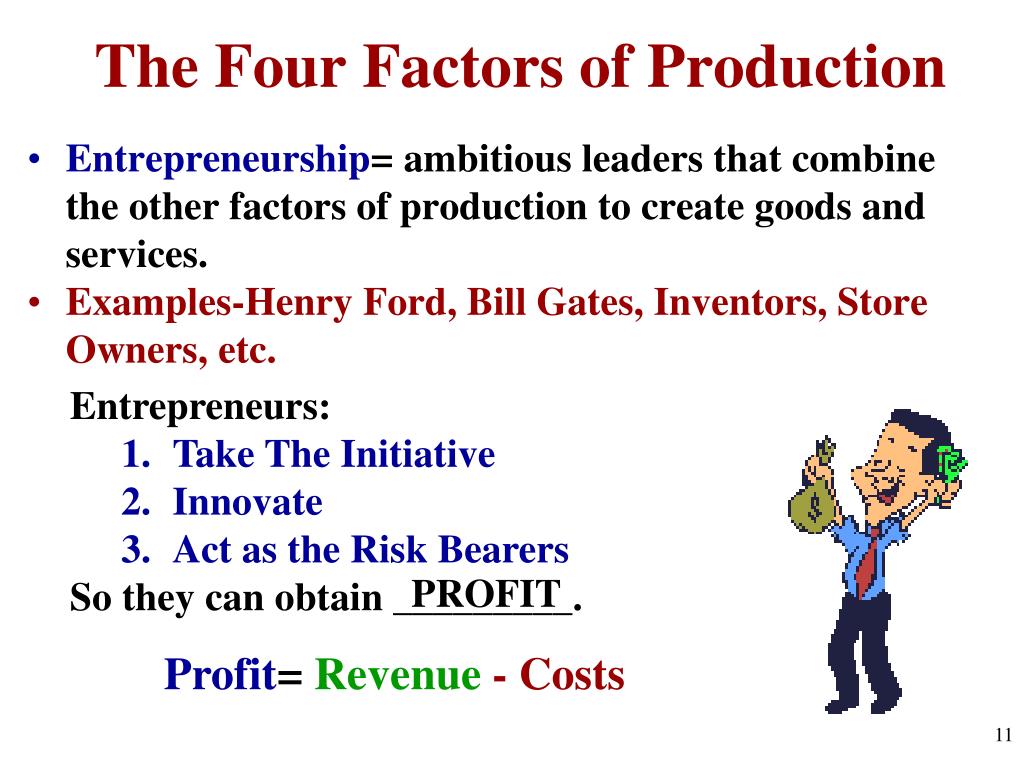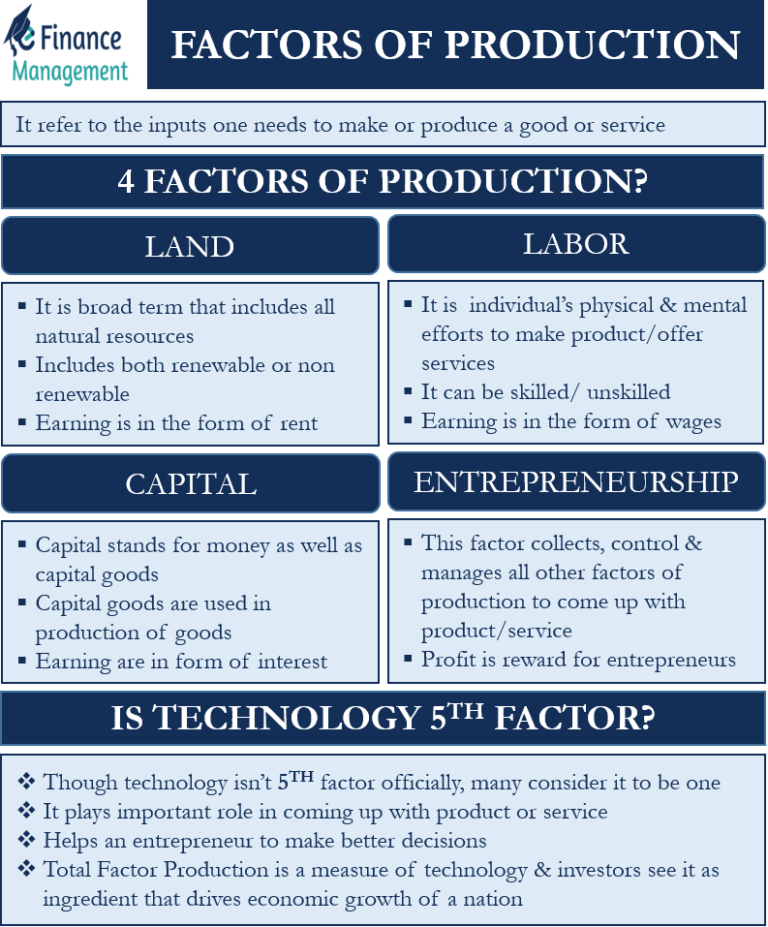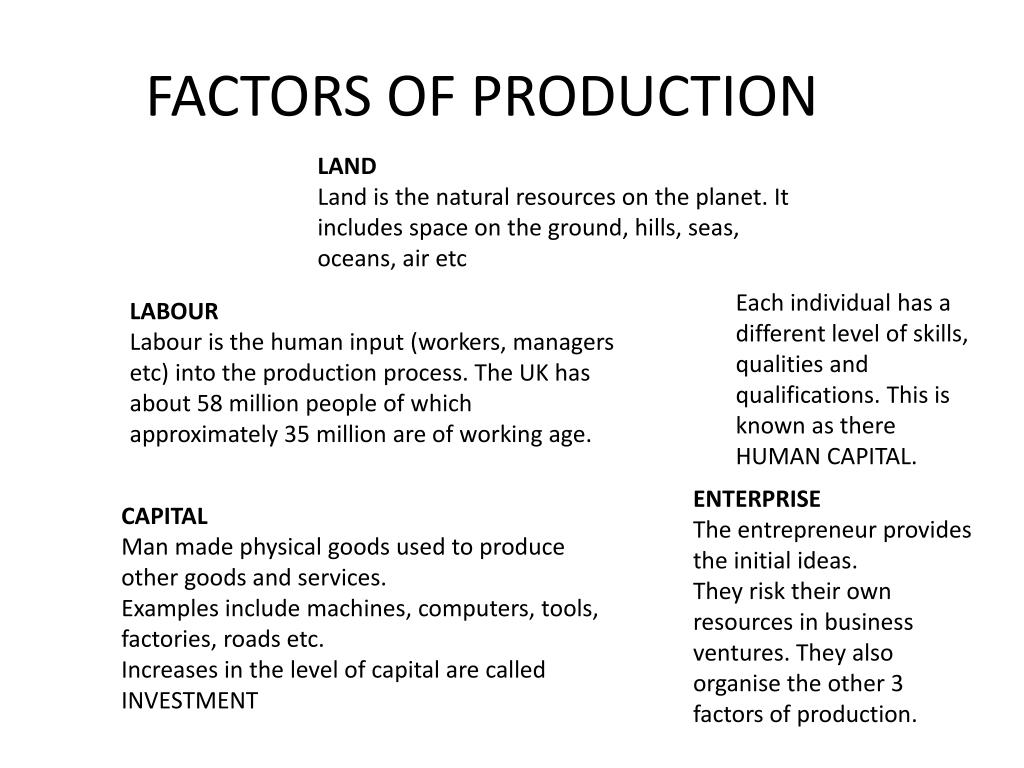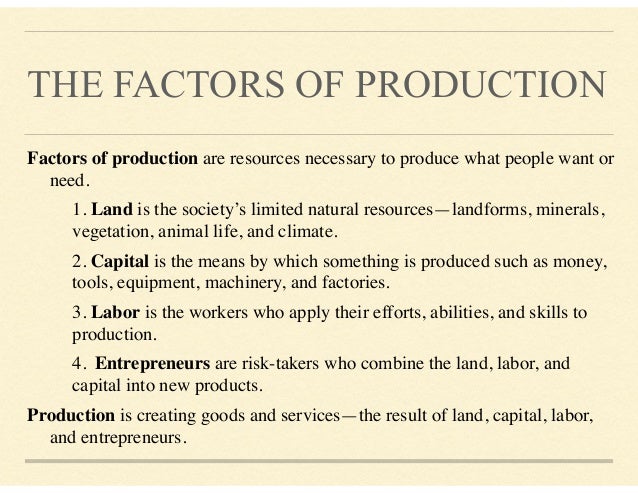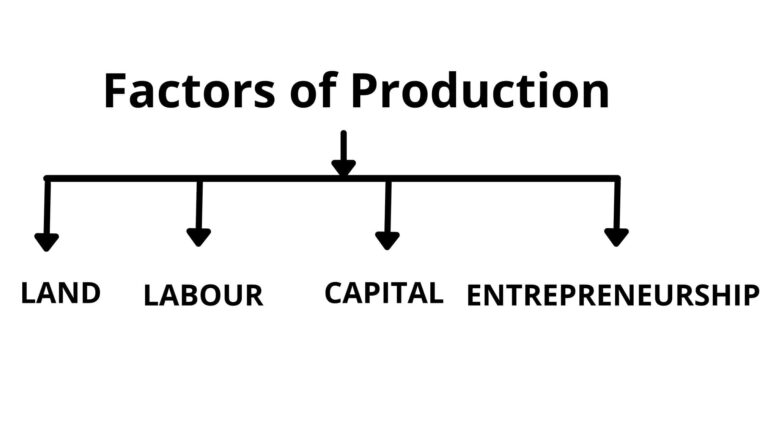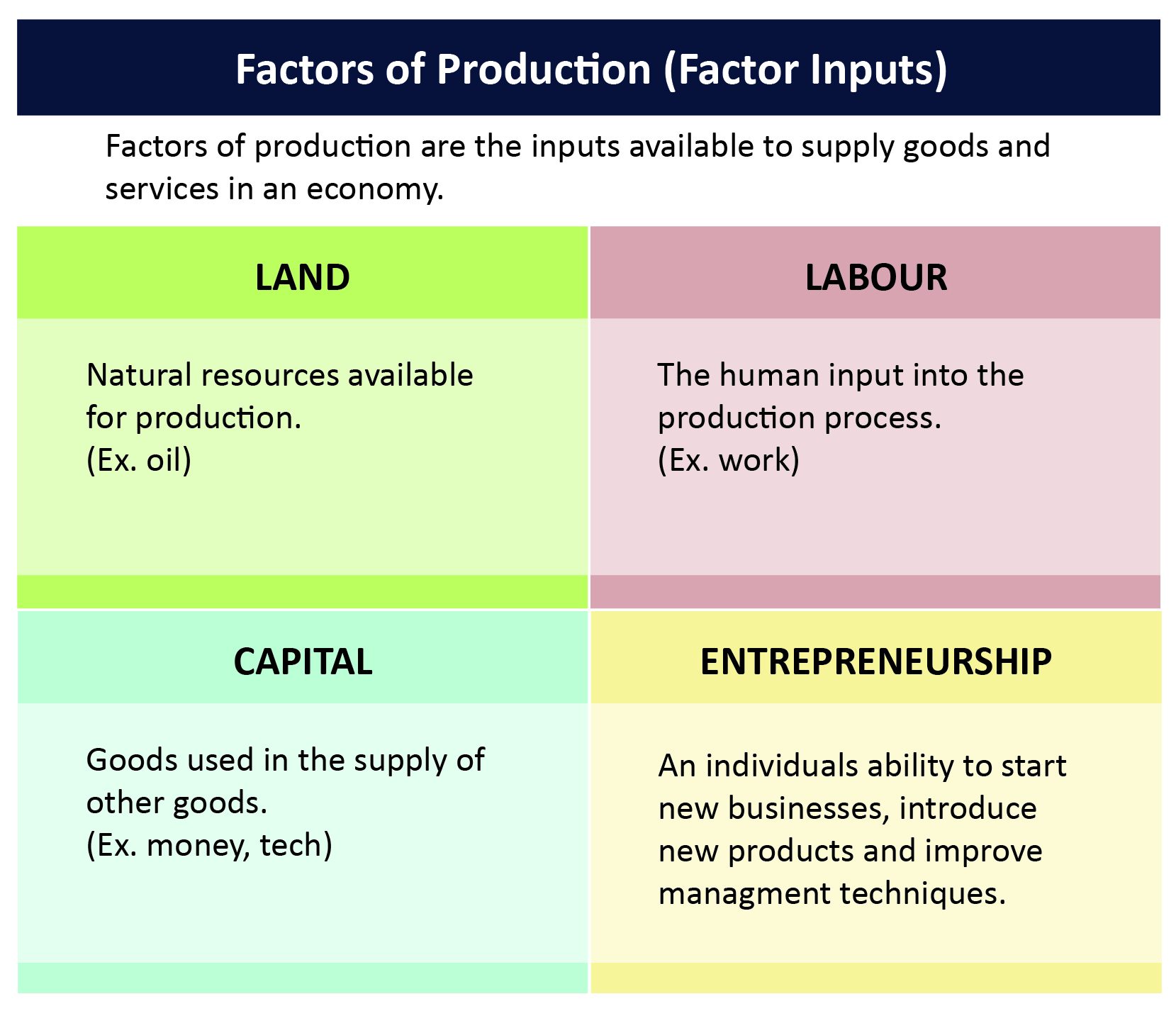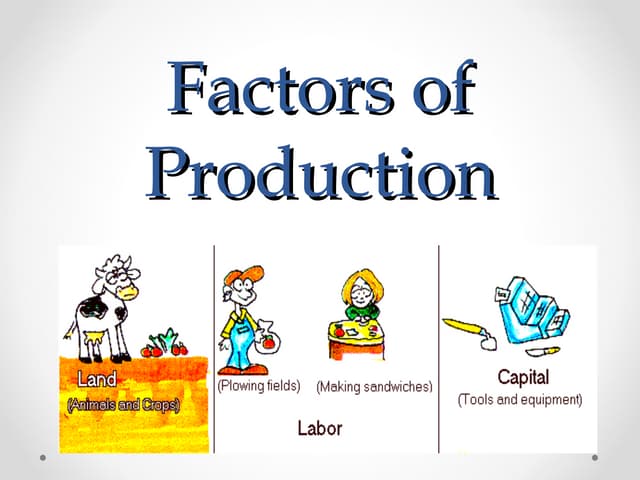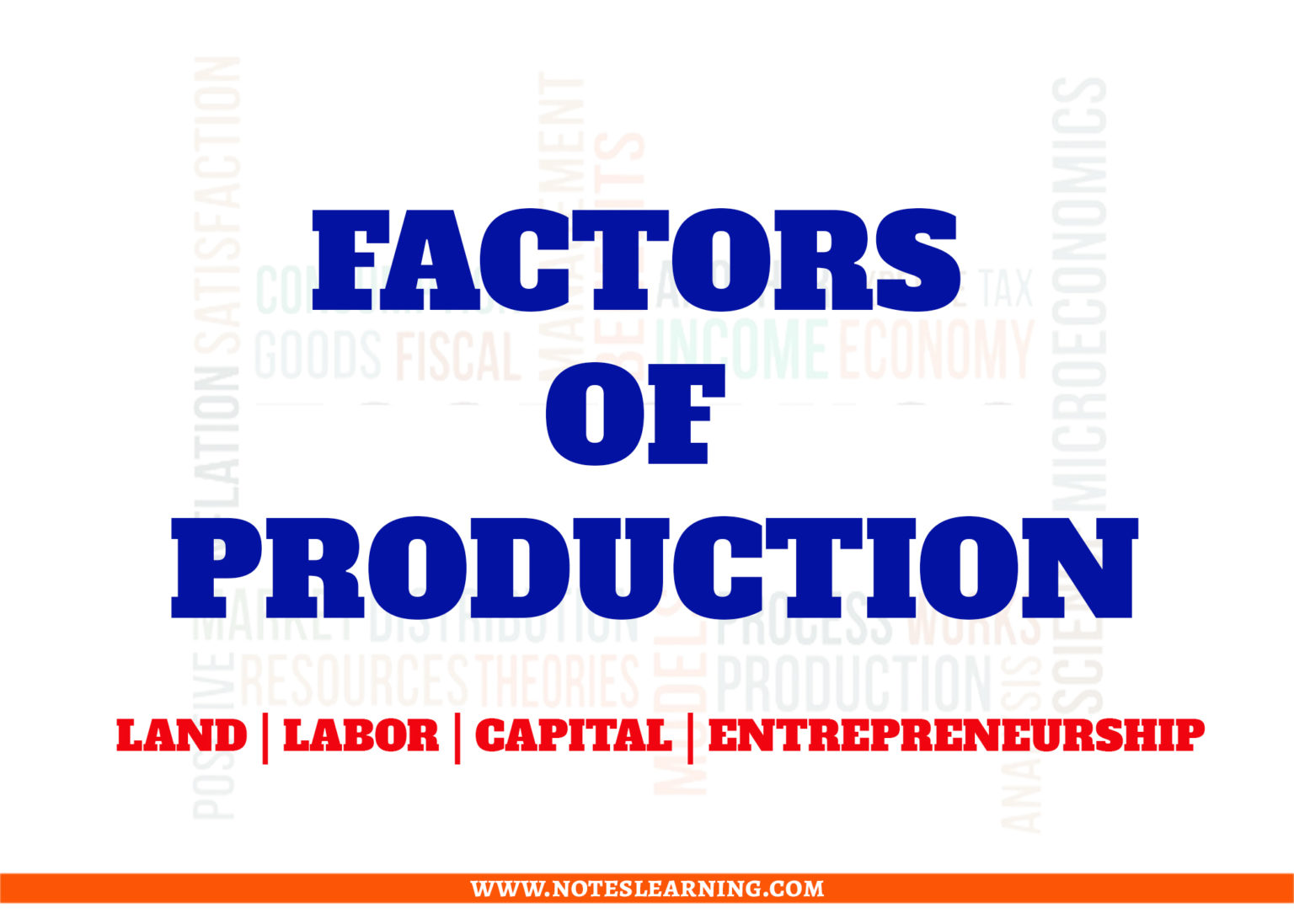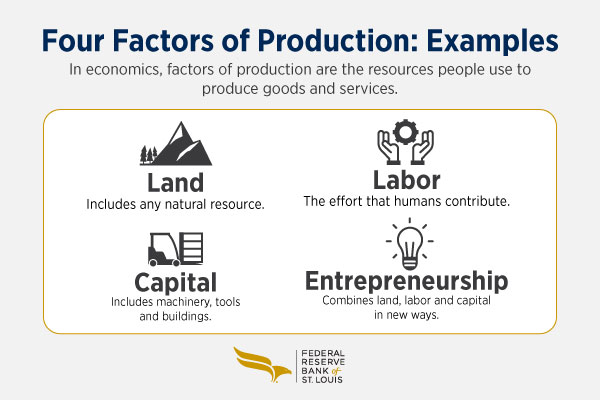Which Statement About Factors Of Production Is The Most Accurate

A heated debate rages among economists: What truly defines the most accurate statement about factors of production? Conflicting viewpoints are challenging established models.
This article cuts through the academic jargon to deliver a definitive analysis. We identify the leading contention and present factual backing for its validity.
Understanding the Core Dispute
The fundamental question revolves around the relative importance and precise definition of the four key factors. These are land, labor, capital, and entrepreneurship.
Different schools of thought prioritize one factor over others, creating significant disagreement. The accuracy of a statement hinges on its comprehensive representation of their interconnectedness.
The Traditional View: Land, Labor, and Capital
The classic model emphasizes land as natural resources, labor as human effort, and capital as man-made goods used in production. This view, while foundational, faces criticism for its limited scope.
It often overlooks the crucial role of entrepreneurship in organizing and innovating within production processes.
The Rise of Entrepreneurship
Modern economic thought increasingly recognizes entrepreneurship as the driving force behind economic growth. Entrepreneurs innovate, take risks, and combine the other factors effectively.
This perspective asserts that entrepreneurship is not merely a subset of labor, but a distinct and vital element. Without it, the other factors remain stagnant.
Analyzing Accuracy: Data and Empirical Evidence
Data from the Bureau of Labor Statistics (BLS) shows a consistent correlation between entrepreneurial activity and economic expansion. Regions with higher rates of new business formation often exhibit stronger GDP growth.
A 2023 report by the National Bureau of Economic Research (NBER) highlights the impact of entrepreneurial innovation on productivity. It suggests that advancements in technology and efficiency are directly linked to entrepreneurial initiatives.
"Entrepreneurship is the engine of modern economies,"states Dr. Anya Sharma, a leading economist at the World Bank.
The Most Accurate Statement
Based on available data and expert opinions, the most accurate statement acknowledges the dynamic interplay of all four factors. It emphasizes entrepreneurship as the catalyst for leveraging land, labor, and capital effectively.
A statement accurately portraying this includes the understanding that technological advancements and economic policy influence these factors. Economic landscape should be taken into account.
Statements overlooking the central role of innovation and risk-taking are therefore deemed less accurate. It is critical to acknowledge that without entrepreneurship, economies stagnate.
Challenges and Counterarguments
Some economists argue that capital accumulation remains the primary driver of economic growth. They cite the importance of investment in infrastructure and technology.
However, this perspective often fails to adequately address the source of innovation and the efficient allocation of capital. Those depend on entrepreneurship.
Furthermore, the availability of land and labor is not a guarantee of prosperity without effective entrepreneurial management. Resources can go untapped.
The Implications of an Accurate Understanding
A comprehensive grasp of the factors of production is vital for shaping effective economic policies. Policymakers must prioritize creating an environment conducive to entrepreneurship.
This involves reducing regulatory burdens, promoting access to funding, and fostering a culture of innovation. Governments and organizations should invest in the entrepreneurial landscape.
Ignoring the central role of entrepreneurship risks stifling economic growth and hindering the efficient allocation of resources. This can lead to stagnation and missed opportunities.
Next Steps and Ongoing Developments
Research is ongoing to refine our understanding of the factors of production and their dynamic interplay. New studies are examining the impact of artificial intelligence and automation on the labor market.
The International Monetary Fund (IMF) is closely monitoring these developments and providing policy recommendations. Its goal is to promote sustainable and inclusive economic growth.
This remains a crucial area of focus for economists and policymakers worldwide. Further analysis is warranted to identify policy approaches that drive productivity and progress.
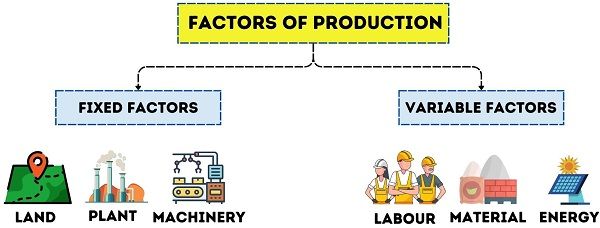
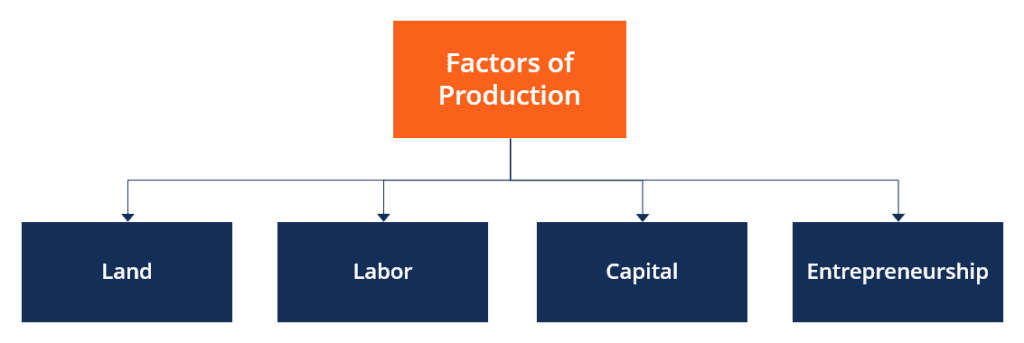
:max_bytes(150000):strip_icc()/Term-Definitions_Factors-of-production-e18b3550bac04855ba04cf3058dfb8e2.jpg)

:max_bytes(150000):strip_icc()/dotdash_Final_Factors_of_Production_May_2020-01-5239bd5e27fc4cfc81f7602af291b769.jpg)
